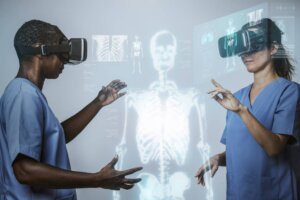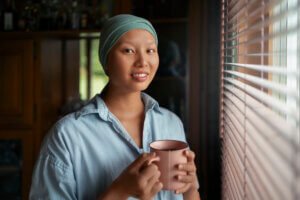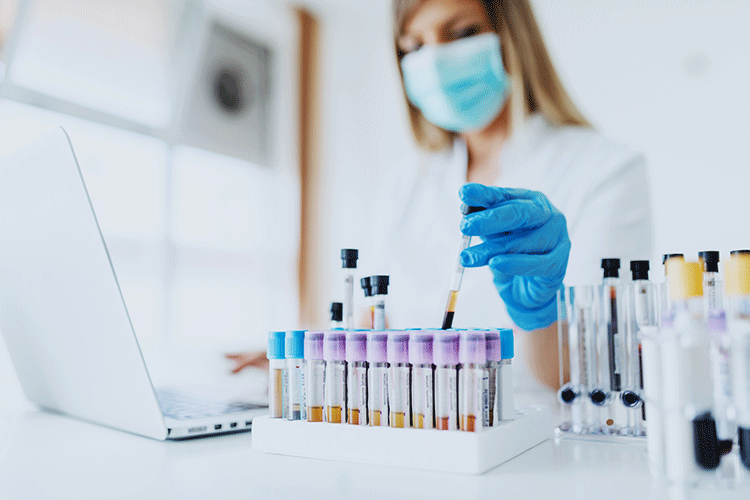If you’ve looked around lately, you may have noticed more and more people in their 20s, 30s, and 40s being diagnosed with cancer. So the question becomes, why are more young people getting cancer in 2025?
Thank you for reading this post, don't forget to subscribe!Are we witnessing a true surge, or are we simply better at finding the disease?
In this article we’ll dig into the latest research, explore possible causes (from lifestyle to environment), and highlight what you can do to reduce risk. Because awareness isn’t fear; it’s power.
Read also: AI in Healthcare
What the Data Show: Early-Onset Cancer Is Rising

According to recent studies, the incidence of cancers in adults under 50 is rising by about 1% to 2% per year in many industrialised countries.
And more than a dozen types of cancer, including breast, colorectal, endometrial, pancreatic, and kidney cancers, are showing the steepest increases among young adults.
So yes, the trend is real. The question now is why.
Better Detection vs True Increase
It’s worth pausing to ask: are we simply finding more cases, or are there actually more cancers developing?
Experts suggest both. On the one hand, improved imaging, screening, and awareness mean more diagnoses.
On the other hand, many of the risk factors that used to affect older adults are now present in younger generations (more obesity, lifestyle changes, and environmental exposures).
So when we ask, “Why are more young people getting cancer in 2025?” We’re dealing with a mix of detection and real change.
Possible Causes: What Could Be Driving the Rise?
One of the major suspects is lifestyle change. Younger generations are dealing with more obesity, more sedentary time, more ultra-processed foods, and fewer physical activity hours than previous generations.
Obesity itself is strongly linked to many cancers, including colorectal, uterine, kidney, and pancreatic.
In short: if your metabolism is stressed, your body’s protective systems (immune, hormonal) may take a hit, increasing vulnerability.
Reproductive, Hormonal and Developmental Shifts
Another piece of the puzzle: changes in when people have children, how many children they have, earlier puberty, and other hormonal shifts. These changes may partly explain the rise in cancers such as breast, uterine, and endometrial in younger women.
For example, younger women today may have fewer pregnancies and later ones, which alters lifetime hormonal exposure, a known cancer risk factor.
Environmental and Early-Life Exposures
Let’s talk about exposures happening decades earlier. Researchers point to the “birth-cohort effect,” that is, people born from the 1960s onward seem to carry higher cancer risk.
What might that mean?
-
Childhood exposure to pollutants, toxins or certain infections
-
Changes in gut microbiome, for example because of diet or antibiotics
-
Accumulated “insults” in early life that manifest later
These exposures don’t guarantee cancerbut they may raise the baseline of risk.
Screenings, Detection and Overdiagnosis
There’s another angle: part of the increase may reflect earlier detection and overdiagnosis, finding cancers that might never have progressed to symptomatic disease.
A study found that while the incidence of certain early-onset cancers doubled, mortality remained stable, suggesting detection improved more than disease severity rose.
Still, detection doesn’t explain all the increase. Many of the new cases are aggressive and showing up in younger age groups with later stages.
Why This Matters: For Individuals and Health Systems


More Burden on Younger Lives
When younger adults get cancer, the impact is different. They have longer expected life spans, may have families or careers to consider, and face long-term effects (fertility issues, financial strain, chronic health management).
Health System Implications
Health systems built around “older-adult” cancer models may struggle with younger onset patterns. Screening guidelines may need to be adapted, and prevention strategies must shift to earlier life stages.
A Chance for Prevention
Since many of the causes above (lifestyle, environment) are modifiable, awareness gives a window of opportunity. When we ask why are more young people getting cancer in 2025, the good news is: there are things we can do.
Read also: Macro vs Micro Nutrients
Action Steps: What Young Adults Can Do Now
1. Maintain a Healthy Weight and Activity
Keep moving. Aim for at least 150 minutes of moderate physical activity each week. Reduce sedentary time.
Focus on a diet rich in whole foods and low in ultra-processed items, and avoid excessive sugar and red meat.
2. Know Your Family History and Screen Accordingly
If you have a family history of cancer, talk to your doctor about earlier screening or more vigilant monitoring, especially for cancers now rising in younger ages like colorectal (now screening often begins at 45).
3. Limit Alcohol, Tobacco & Other Known Risks
These still matter even in younger years. Early adoption of smoking or heavy drinking adds years of exposure.
4. Minimise Exposure to Environmental Toxins
While many exposures are beyond individual control, things we can influence are air quality at home/work, choosing safer consumer products, and reducing hormone-disrupting chemicals.
5. Stay Alert to Symptoms and Advocate for Yourself
Don’t dismiss warning signs because you’re “young.” If you notice persistent changes (bowel changes, unexplained pain, lumps, bleeding, or abnormal fatigue), see a doctor. Early-onset cancers often come with delayed diagnosis.
FAQs: What People Ask About Early-Onset Cancer
Q1: Is cancer really increasing in young people, or are we just detecting more?
It’s both. Improved detection plays a role, but evidence shows real increases in the incidence of many cancers in those under 50.
Q2: Which cancers are rising most among young adults?
Breast (in younger women), colorectal, endometrial/uterine, kidney, pancreatic, and thyroid are among those with notable rises.
Q3: Can lifestyle changes really make a difference in my risk?
Yes. While you can’t control every factor (genetics, early-life exposures), diet, activity, weight, alcohol, and tobacco are major modifiable risks.
Q4: Should screening guidelines change for younger people now?
Many experts believe yes. For example, the age for screening colorectal cancer has dropped in many regions. Talk to your provider about risk-based screening.
Conclusion: Turning the Question Into Action
So when you ask, “Why are more young people getting cancer in 2025?” you’re asking one of the most important public-health questions of our time.
Yes; more young adults are getting diagnosed. And while improved detection plays a role, the surge is real and driven by a mix of lifestyle, environmental and biological factors.
But the story doesn’t have to be one of fear. With proactive choices, awareness, early action and system-level change, we can shift the trend. If you’re young, stay alert, stay active, live intentionally and when in doubt, speak up. Because a healthy future is worth that extra step.
Want to explore more about cancer prevention, early detection, and staying healthy in the modern world? Dive into our other healthcare posts for deeper tips and insights.


